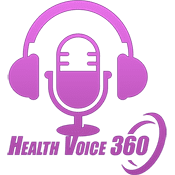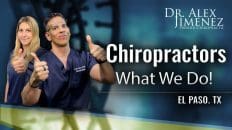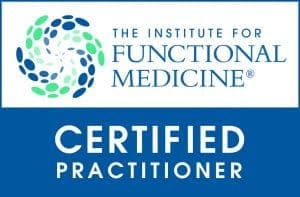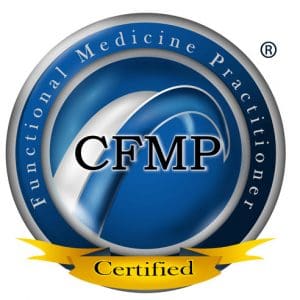Healthcare professionals prescribe custom foot orthoses to help improve foot mobility and posture. People with excessive foot pronation can experience a variety of health issues, including overuse injuries. Overuse injuries caused by excessive foot pronation, as well as various other health issues, can ultimately cause an individual to compensate by changing their regular foot mobility and posture to something that isn’t appropriate for them. According to healthcare professionals, custom foot orthotics can help improve foot mobility and posture in people with excessive foot pronation by allowing them to change back to their original foot mobility and posture before they experienced overuse injuries or any other variety of health issues. Uncomfortable foot orthoses can also cause an individual to compensate and change their regular foot mobility and posture which may ultimately lead to overuse injuries and various other health issues. Research studies have demonstrated how custom foot orthotics help improve foot mobility and posture. Researchers found that the midfoot and forefoot, as well as the rearfoot, are important when it comes to prescribing custom foot orthotics. Therefore, custom foot orthoses should be able to support the entire foot to change foot mobility and posture caused by excessive foot pronation. A total contact approach or a total contact theory focuses on controlling the mobility and posture of the midfoot, not just the rearfoot. Custom foot orthoses ultimately offer support for the entire foot. Dr. Alex Jimenez, a chiropractor or doctor of chiropractic in El Paso, TX, can offer patients custom foot orthotics to help improve foot mobility and posture associated with excessive foot pronation and overuse injuries, among other varieties of health issues. Dr. Alex Jimenez and his staff can help diagnose a patient with excessive foot pronation to provide them with the custom foot orthoses they need and deserve to achieve overall health and wellness.
[00:00:11] It’s probably good for us to start and ask why do we use foot orthoses?
[00:00:17] Why do we prescribe them?
[00:00:20] Do foot orthoses help control motion? Do they have a shock attenuation effect? Do they have a neurosensory effect? And since the excessive mobility pronated foot posture is so much more prevalent in the population, we often think of this being the major factor related to foot alignment and foot posture that leads to overuse injury.
[00:00:46] We know that when an individual undergoes an injury, we say that they compensate, they try to keep doing their activity, but they move to a pattern that’s not their preferred pattern, a compensated pattern.
[00:00:58] Maybe the purpose of the orthotic is to help the individual feel comfortable enough to move back to their preferred pattern of movement. If you make an individual walk with an orthotic that is uncomfortable, they will find a pattern to adapt. And oftentimes that’s detrimental to the pattern that we’re actually trying to have them avoid.
[00:01:21] The other thing that we need to think about is what does the current kinematic motion data tell us about how the foot moves and how then we should design an orthotic?
[00:01:31] The current kinematic research indicates that the midfoot and the forefoot contribute as much, if not more than the rear foot. What this would suggest is that in order to control foot pronation or modify foot posture, foot orthoses need to provide support across the entire midfoot and rearfoot. And the use of wedges alone are unlikely to produce the desired effect on either mobility or posture.
[00:01:59] I have always used what I call a total contact approach to my orthotic or a total contact theory.
[00:02:06] What does that mean? We have to control mobility and the midfoot, not just in the rear foot. So we have to provide total contact to the entire foot and especially into that medial arch region. How do we do that without causing pain? In order to illustrate the effect of the total contact principle.
[00:02:28] Look at the position here as he’s just about loading the foot.
[00:02:31] And I really want you to focus on the midfoot, the articulation between the navicular and the Kenia form. And you’ll see there’s some nice spacing in here now. But watch what happens to that spacing.
[00:02:43] As he loads the foot and the arch drops, you can start to see the arch drop right as the other foot starts to pass and it’ll be coming right.
[00:02:52] You see right there. See how the arch began to drop?
[00:02:57] Now it’s definitely down, isn’t it? And more importantly, you see how this area up here is compressed. This area here has gapped.
[00:03:06] And look at how that continues. You can see there, look at how this whole rotation in the rear foot is occurring, sort of breaking the foot almost in half.
[00:03:16] Now here we’re going to see him walking with orthoses in the shoe.
[00:03:22] And right away you can see a difference, can’t you?
[00:03:24] Look at how we have fairly equal space distribution in here. Remember before this was going to be compressed because of this almost breaking of the foot in half as he starts to lift the heel off the ground.
[00:03:39] As he starts to come through, there’s no change.
[00:03:42] Everything is staying in the same position. And if we start right here. Look at how we have that nice even spacing in here. The orthotic has done what it’s supposed to do. It’s controlling foot posture and thus controlling the amount of tissue stress.
[00:03:57] Millions of Americans suffer from chronic pain throughout their body caused by imbalances and instabilities in their feet. But today, individually designed stabilizing orthotics are helping people live active pain-free lives. Stabilizing orthotics are designed for your body based on a scan of your feet. Unlike the one size fits all orthotics that don’t address your specific needs, your stabilizing orthotics can provide more stability and support.
[00:04:23] The difference in these orthotics, compared to over-the-counter, is supporting the three arch structure called the plantar vault. This structure provides momentum for movement. Your arches from its springy flexibility to accommodate changes in terrain. If one arch in your foot is compromised or you have flat feet.
[00:04:43] Flexibility will diminish and can lead to considerable pain in your ankles, knees, hips, and back.
[00:04:51] Stabilizing orthotics give you the stable foundation…
[00:04:54] You need to help reduce unnecessary stress and strain on your joints. Your plantar vault also provides strength to support the weight of your entire body.
[00:05:05] Once your feet are properly supported, a leveling effect will occur to your ankles, knees, and hips.
Neurotransmitter Assessment Form (NTAF)
The Neurotransmitter Assessment Form (NTAF) shown above can be filled out and presented to Dr. Alex Jimenez. The next symptoms that are listed on this form are not intended to be utilized as a diagnosis of any type of condition, disease, or syndrome, as well as any other type of health issue and complication.
General Disclaimer
Professional Scope of Practice *
The information herein on "How Foot Orthotics Improve Posture and Mobility | Video" is not intended to replace a one-on-one relationship with a qualified health care professional or licensed physician and is not medical advice. We encourage you to make healthcare decisions based on your research and partnership with a qualified healthcare professional.
Blog Information & Scope Discussions
Welcome to El Paso's Premier Wellness and Injury Care Clinic & Wellness Blog, where Dr. Alex Jimenez, DC, FNP-C, a Multi-State board-certified Family Practice Nurse Practitioner (FNP-BC) and Chiropractor (DC), presents insights on how our multidisciplinary team is dedicated to holistic healing and personalized care. Our practice aligns with evidence-based treatment protocols inspired by integrative medicine principles, similar to those found on this site and our family practice-based chiromed.com site, focusing on restoring health naturally for patients of all ages.
Our areas of multidisciplinary practice include Wellness & Nutrition, Chronic Pain, Personal Injury, Auto Accident Care, Work Injuries, Back Injury, Low Back Pain, Neck Pain, Migraine Headaches, Sports Injuries, Severe Sciatica, Scoliosis, Complex Herniated Discs, Fibromyalgia, Chronic Pain, Complex Injuries, Stress Management, Functional Medicine Treatments, and in-scope care protocols.
Our information scope is multidisciplinary, focusing on musculoskeletal and physical medicine, wellness, contributing etiological viscerosomatic disturbances within clinical presentations, associated somato-visceral reflex clinical dynamics, subluxation complexes, sensitive health issues, and functional medicine articles, topics, and discussions.
We provide and present clinical collaboration with specialists from various disciplines. Each specialist is governed by their professional scope of practice and their jurisdiction of licensure. We use functional health & wellness protocols to treat and support care for musculoskeletal injuries or disorders.
Our videos, posts, topics, and insights address clinical matters and issues that are directly or indirectly related to our clinical scope of practice.
Our office has made a reasonable effort to provide supportive citations and has identified relevant research studies that support our posts. We provide copies of supporting research studies upon request to regulatory boards and the public.
We understand that we cover matters that require an additional explanation of how they may assist in a particular care plan or treatment protocol; therefore, to discuss the subject matter above further, please feel free to ask Dr. Alex Jimenez, DC, APRN, FNP-BC, or contact us at 915-850-0900.
We are here to help you and your family.
Blessings
Dr. Alex Jimenez DC, MSACP, APRN, FNP-BC*, CCST, IFMCP, CFMP, ATN
email: coach@elpasofunctionalmedicine.com
Multidisciplinary Licensing & Board Certifications:
Licensed as a Doctor of Chiropractic (DC) in Texas & New Mexico*
Texas DC License #: TX5807, Verified: TX5807
New Mexico DC License #: NM-DC2182, Verified: NM-DC2182
Multi-State Advanced Practice Registered Nurse (APRN*) in Texas & Multistate
Multistate Compact RN License by Endorsement (42 States)
Texas APRN License #: 1191402, Verified: 1191402 *
Florida APRN License #: 11043890, Verified: APRN11043890 *
* Prescriptive Authority Authorized
ANCC FNP-BC: Board Certified Nurse Practitioner*
Compact Status: Multi-State License: Authorized to Practice in 40 States*
Graduate with Honors: ICHS: MSN-FNP (Family Nurse Practitioner Program)
Degree Granted. Master's in Family Practice MSN Diploma (Cum Laude)
Dr. Alex Jimenez, DC, APRN, FNP-BC*, CFMP, IFMCP, ATN, CCST
My Digital Business Card
RN: Registered Nurse
APRNP: Advanced Practice Registered Nurse
FNP: Family Practice Specialization
DC: Doctor of Chiropractic
CFMP: Certified Functional Medicine Provider
MSN-FNP: Master of Science in Family Practice Medicine
MSACP: Master of Science in Advanced Clinical Practice
IFMCP: Institute of Functional Medicine
CCST: Certified Chiropractic Spinal Trauma
ATN: Advanced Translational Neutrogenomics




















